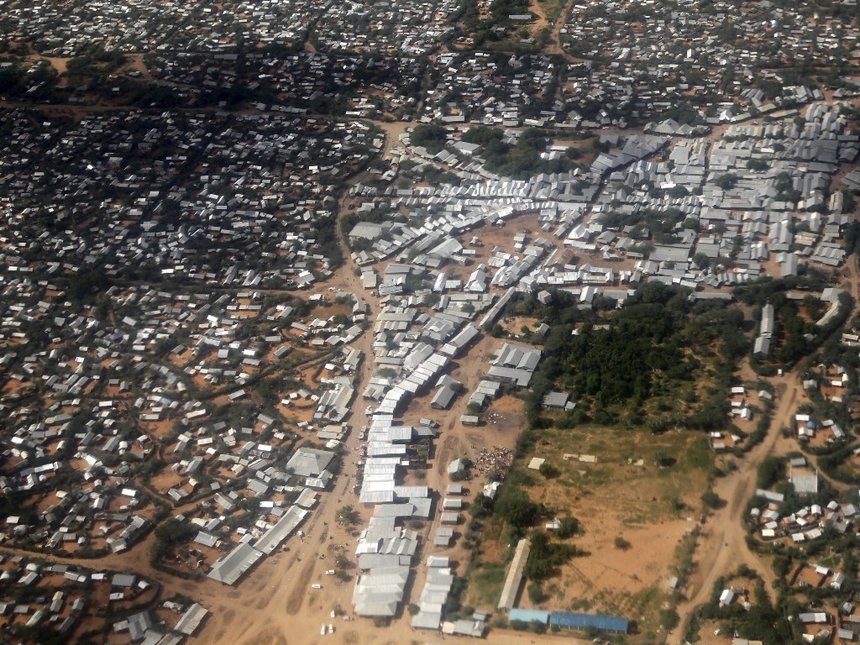By Abdullahi Boru Halakhe , Allan Mukuki , David Kitenge, Refugees International
For 30 years, Kenya has hosted more than 750,000 refugees from Somalia, South Sudan, the Democratic Republic of Congo (DRC), and Burundi. While most live in the Kakuma and Dadaab refugee camps, a minority—more than 100,000 refugees—live in urban areas. This has made Kenya’s refugees heavily reliant on aid and prevented them from seeking alternative livelihoods.
For years, Kenya’s encampment policy prevented refugees from participating in the country’s economy because of the lack of freedom of movement, lengthy processes for getting refugee IDs, and opaqueness in accessing work permits.
This situation, however, has evolved with the Kenyan government recently recognizing the protracted refugee situation and the limitations of the encampment policy, which saw camps with a temporary and emergency lens and did not recognize the refugees as agents of economic development. Over time, notable progress has been seen with increased refugee contribution to the local economy as entrepreneurs, workers, employers, and consumers with various partners support the enhancement of refugee and host community economic resilience and self-reliance.
At the same time, research has shown that camps have negatively impacted the environment. The poorly planned conditions of previous camps have significantly strained scarce water resources, forest, and vegetation cover. The environmental damage has also acted as a catalyst for conflict between host and refugee communities.
Kenya’s Refugee Act of 2021
Kenya’s passage of the Refugee Act 2021 could be a game changer. If fully implemented, the Act offers refugees freedom of movement, the right to work, and access to financial services, among other rights. Kenya’s new Refugee Act recognizes the right to work under Article 28(5) and notes explicitly the “special circumstances of refugees.”
One of the central pillars of the new refugee policy is turning refugee camps into urban settlement areas. For instance, the Kakuma refugee camp has over 2,500 businesses and various urban-based livelihoods, a growing consumption economy of U.S. $56 million, 3 percent contributions to the local gross regional product, a 6 percent increase per capita for the host community incomes, and an increase in employment by 3 percent. The area has turned into a city more than a traditional refugee camp.
There are three durable solutions to refugee situations: return to the country of origin, third-country resettlement, or integration in the countries of refuge. Additionally, Kenya’s Refugee Act 2021 envisions that the refugees in the camps will be turned into integrated settlements, thus creating opportunities to integrate the refugees into the host community. While the new law does not elaborate on the integration process, this is the best alternative among the traditional durable solutions for refugees because most refugees are unlikely to return to their home countries, and resettlement in third countries is already limited to less than one percent of refugees. Given the political headwinds in Western countries on immigration, this alternative is becoming less and less possible.
Since 2019, the Turkana County Government in Kenya has piloted possibilities of economically integrating refugees and the host community through the 15-year, multi-agency plan, the Kalobeyei Integrated Socio-Economic Programme (KISEPD). The plan has become a hallmark for refugee economic inclusion by integrating refugee programs into the Local County Integrated Development Planning.
This has made it possible to advance access to protection for populations of concern, improved access to socio-economic integration, support for local solutions, opportunities for expanding investment in education and health, and access to the labor markets and other livelihood opportunities, such as the IFC Kakuma Kalobeyei Challenge Fund (KKCF) that has increased refugee private sector participation and increased opportunities for self-reliance.
The planning of the Kalobeyei refugee settlement through the KISEDP program additionally demonstrates how refugees and the host community could settle in an accessible, vibrant, and functional urban settlement with adequate social and physical infrastructure and diverse economic opportunities. With the Refugee Act of 2021, there is an expectation for expanded refugee rights and possibilities of greater financial inclusion.
Indeed, by transforming refugee transitioning camps into settlements in the new law, there is hope for providing a better pathway for localizing refugee response. It also enhances local governments’ capacity to respond better and share the responsibility of hosting refugees hosting burden while sustainably addressing the needs of a growing and diversifying population’s participation in local urban governance and refugees’ inclusion in local economic development. While these changes are happening, it is essential to note that while inclusive legal frameworks and global refugee compacts are important, countering institutional barriers requires spirited public leadership and local partnerships to translate abstract principles and norms into concrete action.
Read more: The New Refugee Act in Kenya and What it Means for Refugees
Source: Refugees International


Leave a Reply